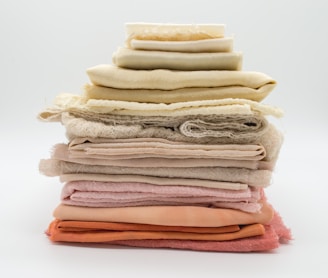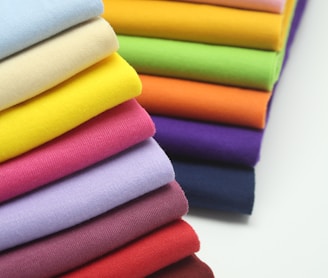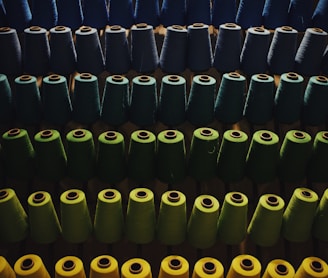DYED FABRIC


Alya Sekawan Textile understands that people buy fabric for various reasons like how it looks, feels, its color, print, or design. They know it's crucial to match the fabric with what the customer wants to use it for. Even though stylish fabrics are popular, basic colors like black and white, as well as natural fabrics, are still very important in the wholesale textile industry.
When it comes to dyed fabrics, Alya Sekawan Texile has knowledge and experience to help customers. Figuring out the right fabric for a specific use is important, and Alya Sekawan Textile can guide customers through this process. We believe that trial and error can be costly and unnecessary when working with dyed fabric.
Alya Sekawan Textile works with dye plants in Indonesia and other countries. Knowing the capabilities of these dye plants and having good relationships with them is crucial for getting the right materials that are both high quality and cost-effective.
While all greige fabrics can be dyed, bleached, or printed, not all fabrics are worth the time and money for further processing. Alya Sekawan Textile stresses that starting with better quality yarns and modern weaving is key to making good fabrics.






Fabric Preparation
Typically, dyeing fabric includes three main steps: getting the fabric ready, dyeing it, and finishing. Fabric preparation is the first step where the fabric is made ready for the specific dye or dyes to be used. This preparation involves various actions like scouring, desizing, mercerizing, bleaching & washing.


Dye Processing & Dye Selection
Alya Sekawan Textile takes pride in asking the right questions because there are various dye processes with their own advantages and disadvantages. They consider factors like where the fabric will be used (indoors or outdoors), how often and in what manner it will be washed, and the desired color retention. The answers to these questions help determine the suitable dye process. Additionally, the size of the dye lot is a significant factor in choosing both the dye process and the appropriate finisher.
Commonly used dye processes include but are not limited to Direct Dyes, Disperse Dyes, Fiber Reactive Dyes, Jig Dyes, Napthal Dyes, Pigment Dyes, Range Dyes, Sulfur Dyes, and Vat Dyes.
Finishing of Fabric – Mechanical & Chemical
People started by learning how to weave cloth a long time ago, and soon after, they figured out how to add colors to the fabric using dyes. However, the art of finishing textiles is a newer thing. At first, finishing fabric meant using machines to shape the cloth, and later on, they started using advanced chemicals. Finishing fabrics includes shrinkage control, hand/feel, fire resistance and the addition of water and added mildew repellency to name a few properties. Textile companies may also use high efficiency steam boilers to produce top-quality fabrics.


Bleached Fabric & Printing
Bleaching is a method used to remove natural impurities from fabric, getting it ready for printing or dyeing. Some customers prefer to bleach their items to a white color or an optic white. It's important to note that not all whites are the same; there can be different shades, some leaning towards yellow or blue. Fabrics bleached typically have a yellowish tint, while those bleached optic white have a bluish tint due to added fluorescent materials during dyeing. It's crucial to determine the right shade of white for your final product.


You would like a Sample? Fill in the form below
Subscribe to our newsletter and get tons of free stuff (Tech pack template, fabric guides, and more!)
By Clicking submit, You have read and agreed with our privacy policy
PT Alya Sekawan Tekstil 2024, all rights reserved
Download our company profile
Navigation
PT. Alya Sekawan Tekstil
Business Park Kebon Jeruk, Jalan Meruya Hilir Raya No. 88 Blok I-15, Meruya Utara, Kec. Kembangan
Jakarta Barat, 11620
